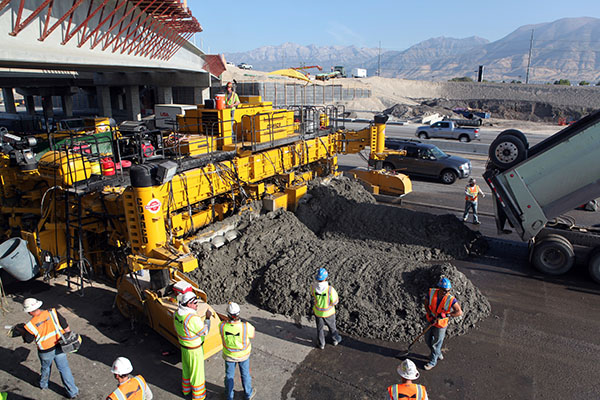Team Effort
October 28, 2011
UDOT teams up with local communities to coordinate access and safety issues during road work.

On some road projects, especially those that pass through business corridors, UDOT uses a Community Coordination Team to collaborate with local stakeholders during construction. While the name of the group may change from project to project, the purpose is essentially the same – to provide a mechanism for hearing concerns of the local community so UDOT can make adjustments or accommodations whenever possible.
CCTs are managed by communication experts who are part of the construction team. While not necessarily handy with heavy equipment, CCT coordinators do understand construction and how that work can impact stakeholder groups. Members of the CCT are people who live or work along the corridor who commit to serve as communication conduits with the important function of hearing the concerns of the local community, then taking those concerns back to the construction team.
Taking a wide view of the construction zone
Putting together an effective CCT starts with taking a look at the community around the construction project area and taking note of intersections, shopping centers, employment centers, schools, emergency and transportation services, and other entities or service providers that have a travel or business interest connected to the corridor. After an assessment of the community, CCT coordinators assemble a group of stakeholders with representatives from each group.
CCT members must be committed to attend monthly meetings, and then take construction information back to other stakeholders in each respective group. People who know the long term history of the area or project during the planning phase are especially helpful as “at large” members on a CCT. Priorities for the project, which include but are not limited to safety and access issues, are set by the CCT members, not UDOT. Members even sometimes determine the name of the committee.
CCT meetings usually take part once a month. The agenda includes an overview of planned construction activities. CCT members then comment on how they see construction proceeding from a stakeholder point of view. For instance, trenching for utility work may be interfering with access – contractors can maintain businesses access by safely covering trenches or adjusting construction activities to keep access through an adjacent ingress and parking lot.
Teamwork pays goodwill dividends
Here are some real examples of ways UDOT, the CCT process and construction contractors have worked together to help businesses during recent construction:
- Parents were worried about children who needed to negotiate a construction area on foot on the way to school. Hearing those concerns, UDOT’s contractor suggested a shuttle and UDOT paid for that expense until full pedestrian access was restored.
- A UDOT contractor provided a resident with a generator – not at taxpayers’ expense – to keep her tropical fish alive during several planned power outages.
- UDOT and UTA provided a Para-Transit pass to a young man who used a wheel chair so he could avoid using travel lanes to access his bus stop during construction.
- A UDOT contractor paid – not at taxpayers’ expense – for a hotel room for four nights for someone with physical disabilities while curing concrete made access to his home difficult.
- A UDOT contractor responded to needs of the Park City Marathon and adjusted the construction schedule so runners would not encounter construction workers arriving on site during the race.
Construction is inconvenient for residents, businesses and road users. UDOT strives to reduce that inconvenience by using the CCTs to keep communication lines open during construction.



